The Future of Exercise Program Design: A Standard Operating Procedure – Gray Cook, Lee Burton and Alwyn Cosgrove
$50.00 Original price was: $50.00.$17.00Current price is: $17.00.
The Future of Exercise Program Design: A Standard Operating Procedure – Gray Cook, Lee Burton and Alwyn Cosgrove Download. Lets discuss the overall concep…
Salepage link: At HERE. Archive:
I’m a big stickler when it comes to laying out a program.
Let’s discuss the overall concept of programming and planning. In the back of the book Athletic Body in Balance, which is taking its 10-year anniversary lap, I talked about my dad’s most-used quote: Make your plan. Work your plan. I went into an explanation of that statement, because it doesn’t mean make a plan and then make your plan work.
The battle plan most generals come up with isn’t the one they finish with, but they have to start with a plan. A plan needs to be based on some metrics you can reproduce, and if somebody put you on the witness stand, the metrics would be strong enough to make you look credible. You don’t just follow a plan because it’s the plan you used yesterday. You make a plan based on science and based on the art and technology of the impact you’re trying to make.
Make your plan; work your plan means massaging that plan, making modifications, looking at your GPS and realizing if you’re a little off course. The way you work your plan is to not be obsessive-compulsive about every minor detail, and micro-manage the process.
It’s simply saying, ‘My goal is to be here by a certain time.’
If you’re not even close at the halfway point, you probably wouldn’t stay on the same program. That’s what my dad meant. Make your plan. Go forward. Pay attention. Watch what’s happening.
Are you ahead of schedule? Are you behind schedule? Are you heading in the wrong direction? Are you delivering what you said you could deliver through this plan?
Now let me tell you another story. I referenced a lot of John Wooden’s thoughts in Athletic Body in Balance, and also some of Bruce Lee’s material.
From a philosophical standpoint, I love the approach Bruce Lee brought back to martial arts. He re-energized the beauty, precision, technology and art of martial arts. He did it from a philosophical base by reminding us that many of the things we do are not as efficient or as practical as they could be, and if we continually work the plan, we can continue to make things better. We want to honor the history and to honor the classic teaching style, but when we can improve with new technology, new approaches and new paradigms, we should.
John Wooden was the basketball coach at UCLA, and many refer to him as one of the winning-est coaches of all time. But John Wooden didn’t consider himself just a coach. He was also a teacher. Even when he was coaching, he was continuously teaching. He had a method for doing everything, even something as simple as the way his players put on their socks. His ‘why’ statement—his rationale—was, ‘If you get a blister, you can’t practice tomorrow. Let’s pay attention to all the things other teams aren’t paying attention to.’
At the time, what struck me as a young coach, teacher, lecturer and therapist is that with all the prestige John Wooden had, he was essentially his own strength coach. He was the head coach of the basketball team, but he didn’t sub out the conditioning.
Here’s what he did. He created skill drills on the basketball court that put a spotlight on each of the very important movement parameters involved in a complete basketball game—a defending drill, a rebounding drill, a shooting drill, a stalling-the-clock time drill and others.
Small pods of athletes who had similar problems or similar responsibilities were grouped together. The competition drill was a microscopic aspect of a sport skill. They would go to a station, execute the sport skill and move to another station. The execution of the drill created some degree of fatigue. Moving to a new station offered very little rest breaks. What these drills taught was not only a higher skill rate within the drill, but the athletes had to recover from that energy expenditure on the fly. They had a very small rest break from which to regain composure, center their breathing, stabilize their focus and take action.
What do we do with the rest breaks when we work out? Do we really try to recover quicker? Do we focus on that?
One of the reasons I love battling ropes, jump rope and kettlebell swings and snatches is because there’s a huge metabolic demand. We’re going to get smoked—some people earlier and some people later—but we’re all going to get smoked.
But smoking you with one of these devices is not my goal. I want to find out how quick you can be ready to step up again. The point is to zero in on what you do in that rest break—regaining your composure, maybe working on a corrective area that tenses up really quickly with exertion, refocusing your breathing, doing something with your eyes or your posture to reset yourself.
How many of us can accelerate recovery? That’s a very important concept; it’s a great sidebar to consider.
John Wooden used basketball skill drills to create a metabolic demand to execute speed, agility, quickness, shot precision and more. Then, just like in a game with limited time to recover and rest, he moved the athletes to the next stations.
The beauty of this is that those 40 minutes didn’t just all happen by accident.
As accomplished as he was, John Wooden often spent two hours designing a 40-minute practice. That’s very, very important. He made a plan.
He knew exactly what was going to happen every second of the practice. By doing that, he kept people at or near the edge of ability, constantly digging, learning and refining patterns of movement.
As technology and science continue to offer us more information about the people we train and rehabilitate, we have to realize that every time we introduce a new metric, we don’t have to completely gut the system. We just ask, What does this metric affect? Does it find a bottleneck we weren’t finding? Does it find an area of inefficiency?
I’m very excited about the newest DVD we just released called The Future of Exercise Program Design. I laid the groundwork in this DVD for how to think through what you already know, and then add the new information offered by movement screening. Movement screening wasn’t even an issue 15 years ago. It wasn’t something we considered. If we had an appreciation of movement patterns, it was because of our intuition or experience, not because of a formal metric or system. We now have that, but it sometimes creates just as much confusion for some people as it does success for others.
Lee and I worked on this DVD to show people they don’t have to throw away their programs. They just have to listen to what the movement metric and the movement information is saying about the success or lack of success in training movement patterns, as well as metabolism, sport skill, body symmetry, muscle development, endurance, stamina, speed and quickness.
But the star of this show is Alwyn Cosgrove. He comes up like a true coach with his dry-erase board and starts talking program design. I appreciate listening to Alwyn lecture because as part of the audience, we realize he’s not just a professional lecturer. He’s deeply involved in program design in his facility. He’s thought about it. He’s the kind of guy who spends two hours figuring out a 40-minute workout.
Once you do that a few times, your brain gains a precision in finding wasted time in a workout. By doing these program designs, by listening to the things on this DVD and by studying coaches like John Wooden, you become an economist. You manage a scarce resource… and that scarce resource is training time for you and your clients. You want the maximum benefit from that scare resource.
Most of us want to be fit, not simply so we can say we’re fit, but also so we can participate in every opportunity of adventure, activity, movement, exercise or competition. I want you to look at this programming DVD as a way to get a competitive advantage. People sometimes feel the movement screen is constrictive to their programs. It’s not; instead, it shows you where your program is constrictive.
It’s giving you a competitive advantage.
Here's an overview of the prominent keywords and a list of famous authors:
Business and Sales: Explore business strategies, sales skills, entrepreneurship, and brand-building from authors like Joe Wicks, Jillian Michaels, and Tony Horton.
Sports and Fitness: Enhance athleticism, improve health and fitness with guidance from experts like Shaun T, Kayla Itsines, and Yoga with Adriene.
Personal Development: Develop communication skills, time management, creative thinking, and enhance self-awareness from authors like Gretchen Rubin, Simon Sinek, and Marie Kondo.
Technology and Coding: Learn about artificial intelligence, data analytics, programming, and blockchain technology from thought leaders like Neil deGrasse Tyson, Amy Cuddy, and Malcolm Gladwell.
Lifestyle and Wellness: Discover courses on holistic health, yoga, and healthy living from authors like Elizabeth Gilbert, Bill Nye, and Tracy Anderson.
Art and Creativity: Explore the world of art, creativity, and painting with guidance from renowned artists like Bob Ross and others.
All the courses on WSOlib are led by top authors and experts in their respective fields. Rest assured that the knowledge and skills you acquire are reliable and highly applicable.
Specification: The Future of Exercise Program Design: A Standard Operating Procedure – Gray Cook, Lee Burton and Alwyn Cosgrove
|
User Reviews
Only logged in customers who have purchased this product may leave a review.
$50.00 Original price was: $50.00.$17.00Current price is: $17.00.
Related Products
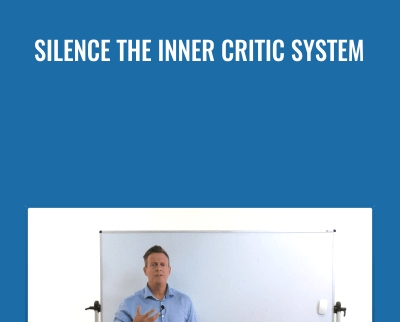
Silence The Inner Critic System – Richard Grannon
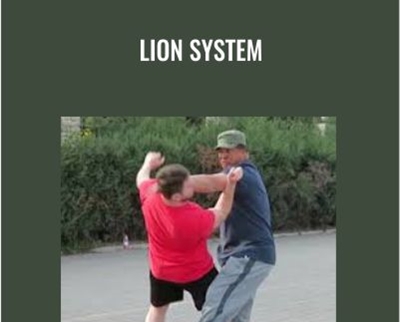
Lion System – Yin Style Bagua
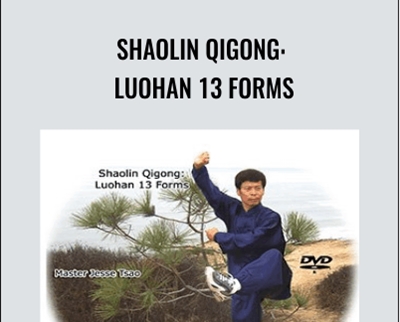
Shaolin Qigong Luohan 13 Forms – Master Tsao

Shamanic Journeying for Guidance and Healing part 1 – Sandra Ingerman
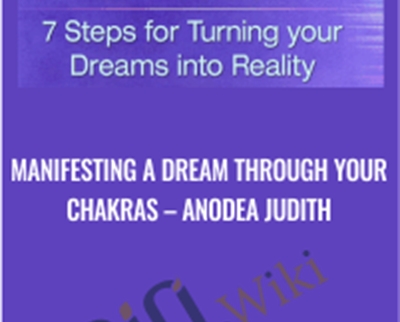
Manifesting A Dream Through Your Chakras – Anodea Judith

$50.00 Original price was: $50.00.$17.00Current price is: $17.00.

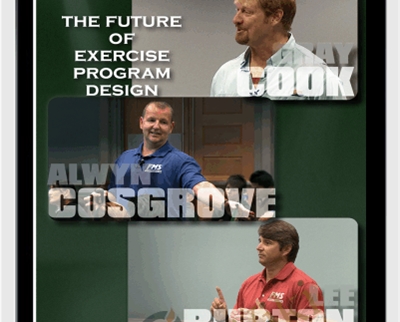





There are no reviews yet.